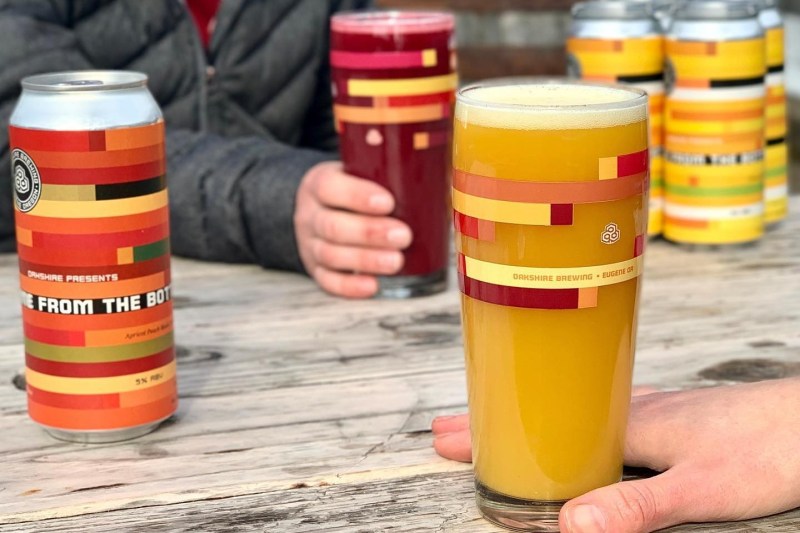The world of craft beer is massive and always in motion. Seems like just a generation ago we had a handful of macro options, plus the occasional micro selection. Today, we are gifted with thousands of players in the craft beer scene, all working to elevate the industry and push it even further ahead.
We reached out to Jim McCune, who has spent decades in craft beer, for some insights and things to look out for. He’s had runs at brewers like Blue Point and is presently the executive director of the Craft Beverage Division at EGC. What’s he seeing in his crystal ball? For one, even more innovation in the hazy IPA, sour, and traditional lager genres. Also, more in the way of fusion beers made with CBD and THC.
Here are some other things that are changing the craft beer landscape and will continue to do so going into 2022.
Most Surprising: Zero-Alcohol Beer
As a drinker of the alcoholic stuff, McCune found this trend rather surprising, at least at first. “As consumers around the world become more health-conscious and mindful of what they consume, the no and low-alcohol beverage market will continue to grow,” he says. This category has earned the respect of millennials especially, who are quite concerned with wellness. Expect this category to only grow in 2022.
The Importance of the Influencer
Influencers aren’t entirely new, at least not to marketing. But their role in beer has grown and continues to change. And it’s not just celebrities anymore, as McCune says. It’s people passionate about beer, able to create and grow social media accounts online. “Craft beer lovers and aficionados flocked to Instagram and created fan pages to geek out over their favorite beers, and new releases,” he says. “Over the years, the craft beer industry became colossal in size, and so did the craft beer Instagram community.” He adds that there are many plusses to this kind of publicity, from the word-of-mouth feel of it to close engagement with customers and potential customers.
Giving Back, Now and Always
“Breweries have always been known as great stewards of their communities, even before the space was trending,” McCune says. It can be argued that this sector inspired many others to follow suit and donate a portion of their proceeds to important causes. As McCune says, it’s become all the more important lately given everything that’s unfolded, from the huge blow the pandemic has dealt (to food and beverage, especially) to broader issues finally getting a proper reckoning, like racism and sexism. “Craft breweries understand that they’re not just helping others, they’re gaining loyal, like-minded friends, and customers—while changing the world,” he says.
Long Live the Collaboration
McCune says collaborations suit the industry as they allow breweries to share customers, equipment, and other resources. “Collaborations defy the conventional business rules of competition, which gives them a highly unique cool factor,” he says. “Customers are naturally curious about the results of each collaboration, and want to make that determination for themselves, which results in beer sales from the collaborators’ consumer bases, and beyond.” Some of the most intriguing beers in all of the craft landscape have come from collaborations. Don’t expect that to change anytime soon.
Seltzer Sizzles
Hard seltzer hit hard in 2019 and continues to sizzle today. McCune says the category is expected to be worth $15 billion in a mere five years. While mass brands like White Claw and Truly dominate the space, many of the 8,000 U.S. breweries are getting their hand in the hard seltzer game,” he says. “Today, drinkers have more than 700 of the malt-based seltzers to choose from.” It’s an explosive category that’s now home to all kinds of flavors. It will be interesting to see how beer and seltzer continue to coexist in 2022.
Newest Hotspot: Minneapolis
Most people know about beer havens like Portland, San Diego, and Vermont. But where else is craft thriving? McCune says the Twin Cities, which really only got its start about a decade ago. Bizarrely, it required removing some antiquated legislation. Their story goes back to 1920 with Prohibition, and even after its repeal in 1933, parts of these Prohibition-era laws still affect beer sales in Minnesota today,” he says. The founder of Surly Brewing spearheaded efforts, pushing to allow onsite craft beer consumption. “The results,” McCune adds. “The states’ 20 craft breweries exploded to more than 200 in the Twin Cities metro area alone.”



